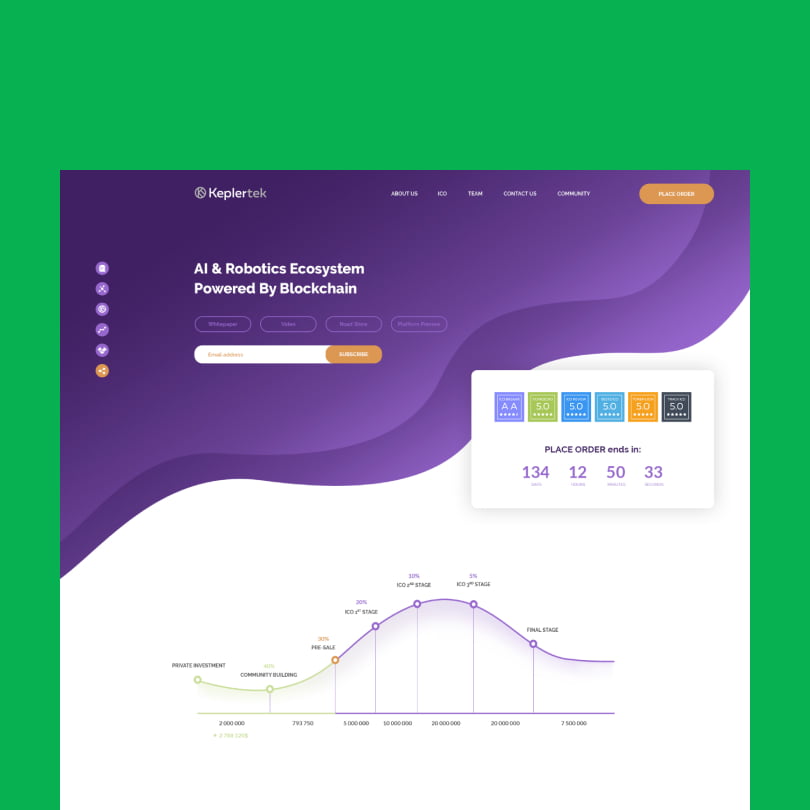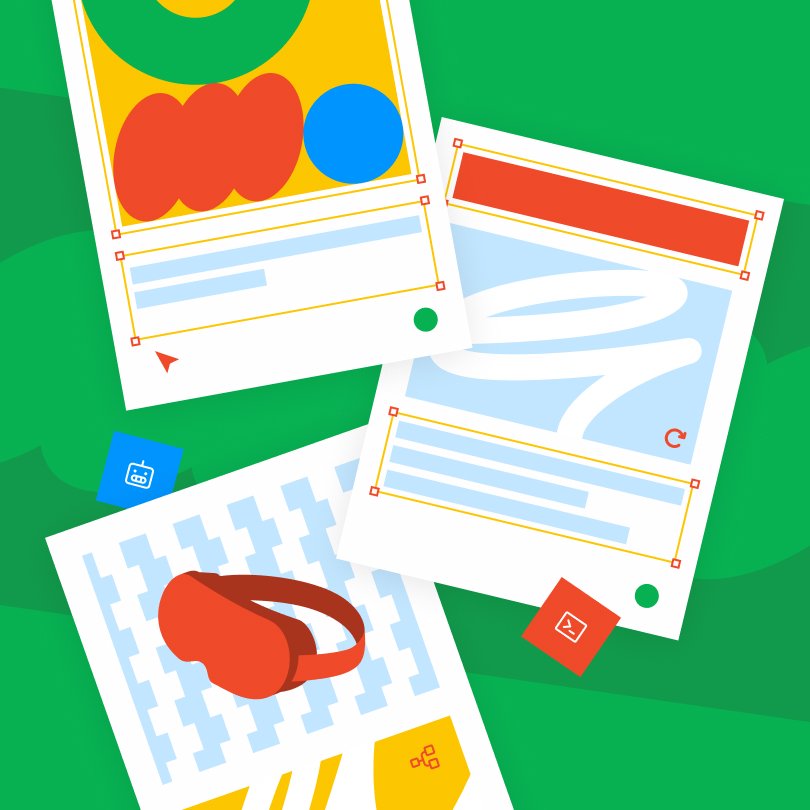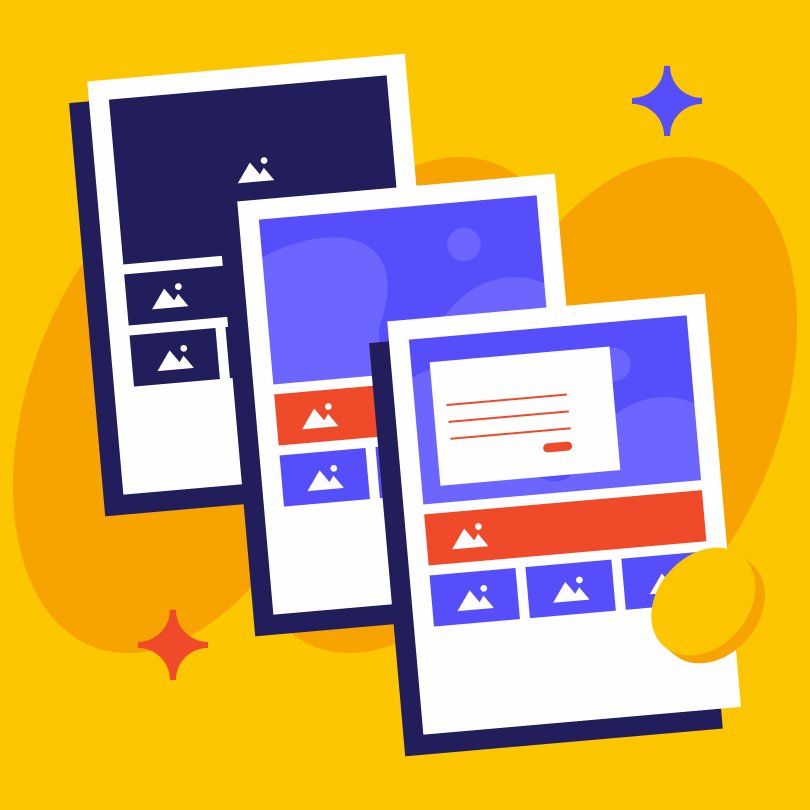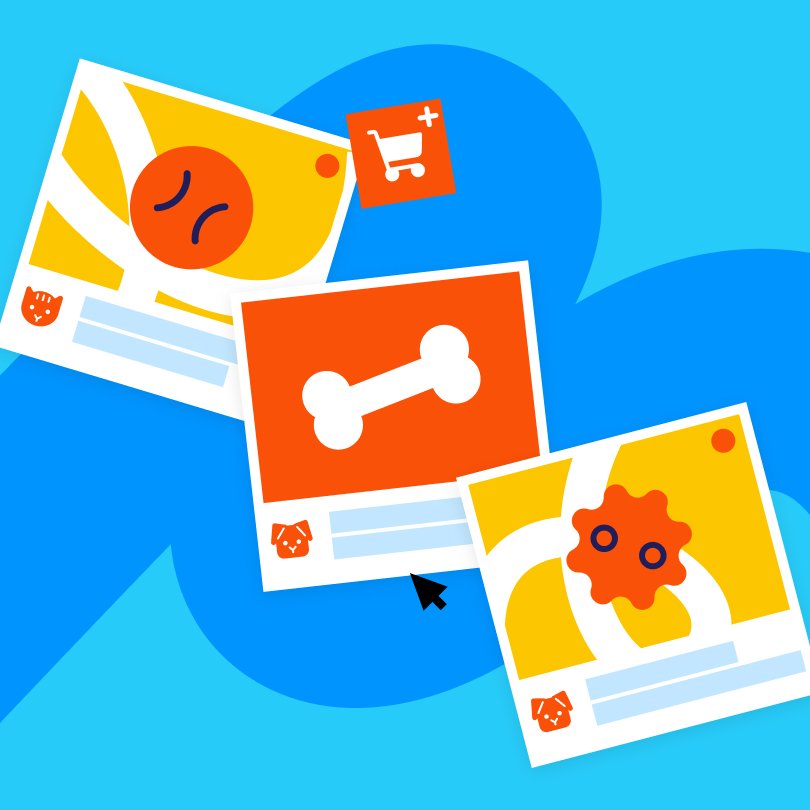Artificial intelligence (AI) has become the gist of nearly every trending headline, discussion, and conversation in 2023. After OpenAI launched ChaGPT-4, the advanced language model, in March, it was no longer possible to escape how much AI has evolved.
Its capabilities now go beyond automating tedious tasks. Generative AI can create stunning content from a single prompt, leaving artists, writers, and developers simultaneously thrilled and terrified.
With most major companies competing to build or include generative AI in their products and services, we’re undeniably witnessing a pivotal moment in history. These developments will cause a ripple effect across industries, so you’re rightfully wondering what that means for web design and development.
In this article, you’ll learn about the applications of AI in this industry, its advantages and disadvantages, and how the future may play out.
AI and Web Development and Design: Practical Applications
Web developers and designers use AI in many ways to streamline their work and brainstorm novel solutions. However, the following are the most common applications:
1. UI/UX Design Optimization and Creation
Today, web designers have multiple AI tools at their disposal that can create logos and different types of visuals for them. Some can also build aesthetic website templates and turn outlines and sketches into digital art.
This is also the most common use of AI in web design. – HubSpot found that 93 percent of web designers have used AI apps and tools for web design-related tasks in the last three months. Fifty-eight percent used it to generate imagery for a website, 50 percent used it to develop complete web page designs, and 49 percent experimented with it to brainstorm new elements and strategies.
2. Chatbots and Content Personalization
AI-driven chatbots allow real-time user interaction, provide information, help with complex transactions, and answer questions. They rely on machine learning (ML) and Natural Language Processing (NLP) to understand the queries of website visitors and provide 24/7 customer service.
But AI can also help devs deliver personalized content by leveraging ML algorithms to assess data related to user behavior, such as browsing history and what element they interact with the most. That ensures that users see content tailored to their preferences and interests.
3. Code Generation
Writing code is the foundation of a web developer’s responsibilities, and AI can help complete that task faster. Although it still requires human input and refinement, AI can create, optimize, and complete code based on a given prompt.
According to SourceGraph, 95 percent of devs use AI to write code, although 76 percent are worried about the amount of code generated daily. Despite the growing worries, many tech CEOs, including Github’s Thomas Dohmke, believe AI will write most of the code in less than five years.
4. Predictive Analytics and Quality Assurance
Generative AI can help build websites and stunning designs but also run automated testing. Web developers can use AI-powered tools to analyze substantial chunks of data and predict potential issues that may occur in the deployment stage.
That enables developers to take a proactive approach to issues related to server management, improving website speed, reliability, and performance. Besides providing quality assurance and ensuring data-driven decision-making, AI enhances security by identifying network traffic anomalies and threats devs might overlook.
What are the Pros of AI in Web Design and Development?
Increased Efficiency and Productivity
GitHub conducted a survey in 2022 to analyze the effects of the AI Copilot program that transforms natural language prompts into coding suggestions. They discovered that Copilot improved the job satisfaction of up to 75 percent of developers and helped them stay in the flow and preserve momentum during repetitive assignments.
Moreover, 88 percent of devs said this program made them more productive and ensured they completed their tasks faster. AI evidently increases efficiency and helps with uninspiring and tedious parts of the projects.
That helps developers in various ways. – It leads to a better time allocation and gives them more energy to dive into creative endeavors. Thanks to that, devs can focus on innovation and strategic design decisions, while AI takes care of responsibilities such as formatting buttons and developing filler texts.
Personalized User Experience
Over 74 percent of customers want website content tailored to their needs and preferences to avoid frustrations. That’s why web developers and designers need versatile AI capabilities to ensure they understand their visitors’ profiles.
AI-powered tools are invaluable in analyzing browsing behaviors, demographics, affinities, and past interactions. They can dynamically create content based on specific user parameters and perform automated A/B testing to optimize web pages and designs.
Better Understanding of How Users Experience Developers’ Designs
AI helps web developers and designers personalize website content but also enables them to identify how users interact with every design and element. Before, they could only get limited and superficial insights.
Today, AI helps compile and assess feedback and turn it into actionable results. It evaluates repeated terms and keyword transcriptions, allowing designers to decide based on relevant reviews and data.
Improved Web Experience Accessibility
Most web developers and designers aim to build inclusive and intuitive websites but don’t always succeed in meeting that objective. But the combined effort of devs and AI’s capabilities make accessibility more attainable.
For instance, some AI tools improve keyboard navigation and screen reader optimization, but we’re only at the beginning of what will be possible. AI will likely help identify more areas requiring improvement to provide more accessible design, such as character and icon sizing and automatic tooltips.

What are the Cons of Ai in Web Design and Development?
Ethical Concerns and Lack of Regulations
Although AI is not a novel revelation, its evolution accelerated after the pandemic, meaning our society lacks the necessary ethical framework and regulations. Even though it’s been with us for decades, we might only be at the beginning of a long learning curve.
Yet, multiple new AI tools and apps pop out nearly every day, and it’s challenging to keep up with all of them and understand how to leverage their benefits. But it’s also tough to be confident about whether the use of AI is ethical and non-abusive when it comes to copyrights.
As a result, you might be conflicted about whether you have the right to use AI-generated imagery and designs freely. That requires reading the terms and conditions of each AI tool and app and your input to personalize the final product.
Potential Decline of Creativity
Even though this is a slightly controversial topic, it’s impossible to say whether AI is capable of authentic creativity or if that’s an inherently human characteristic. AI follows patterns and lines of pre-determined instructions to create designs based on user prompts, and many claim that it prevents it from creating something unique.
After all, everything that human web designers and developers create comes from their take on the world and lived experiences and lessons, which AI doesn’t have (yet). When building a website or creating imagery, devs fine-tune it to match clients’ and users’ needs and preferences, while AI brings a relatively uniform output that lacks distinctive flair.
That could cause visitors to find a site or designs unrelatable and cookie-cutter, which is why they might never come back. Hence, the widespread implementation of AI in web development and design could lead to a lackluster digital landscape.
Eventually, most websites could start looking like replicas of one another, following the same patterns. Yet, that could also cause another paradigm shift, pushing people to return to human-generated designs seeking innovation and connection.
Replacement of Web Developers and Designers with AI
Although AI is just a tool that streamlines your work and can’t replace your expertise, it’s continuously evolving. It’s also naive to see the world solely through rose-colored glasses and believe it won’t affect the workforce.
According to Insider, nearly 4,000 people lost their jobs in May 2023 because of AI – the first reports officially cited it as a reason. Goldman Sachs report also found that generative AI could impact 300 million jobs in the U.S. and Europe, and creative occupations will likely take the strongest hit.
Because of that, web developers and designers must learn to use these AI tools to their advantage and incorporate them into their work. Otherwise, you risk those who use AI replacing you.
The Future of AI in Web Development and Design
As we’re still at the dawn of applications of generative AI in web design and development, we’re in for a thrilling ride. Continuous NLP advancements will enable devs to understand and respond to user inputs more effectively, offering highly personalized experiences.
As a result, websites will engage in natural, context-aware conversations with users, revolutionizing chatbots and virtual assistants. Developers can also expect interfaces that comprehend user intent to a greater extent. That will lead to more accurate responses, efficient information retrieval, and improved customer support. Rapid prototyping will become more seamless, empowering designers to iterate quickly and efficiently.
Meanwhile, AI integration will augment designers’ capabilities by offering intelligent design suggestions, layout optimization, and style recommendations. These advanced insights could help devs leverage AI-generated ideas as a starting point, sparking their creativity and pushing the boundaries of innovation.
Web Design and Development Beyond Computers and Mobile Apps?
On the flip side, AI will likely merge or arise devices and tools that will impact web design and development that we can’t yet imagine. For instance, Apple recently presented The Vision Pro mixed-reality headset that will be available to the public in early 2024.
Even though that goal is debatable, Apple has imagined this product as a revolution that could replace computers and smartphones. We might have to reinvent how we think of and approach web development and design.
Devs might start exploring new possibilities and creating websites and apps that offer engaging virtual experiences. In the future, users might navigate and interact with digital content innovatively and more immersively.
Because of that, web designers may have to adapt their design principles to accommodate spatial computing. Having apps appear side by side at different scales opens up opportunities for creative layouts and novel user interfaces.
Designers might have to consider how they can use shadows, lighting, and depth perception to communicate scale and distance effectively. They might even learn to create and optimize applications specifically for Vision Pro and similar headsets.
If that happens, devs might have to learn visionOS and build immersive experiences that align with the expectations of VR users. Hence, the future could likely be more exciting and complex than we can imagine now, and it might go beyond AI.
Conclusion
AI website development and design are evolving rapidly, with a more drastic evolution still ahead. However, finding the safest and best way to leverage AI for web design and development can be challenging in this uncharted territory of limited ethical guidelines and conflicting regulations.
While concerns about removing the human touch and copyright issues may arise, most developers today utilize generative tools to enhance efficiency and productivity. The combination of AI and web development offers numerous advantages, and although risks require acknowledgment, learning to harness its power is crucial for streamlining work.
Whether you choose to employ AI or seek professional and custom web development services, adapting to the transformative digital landscape is essential for maintaining a competitive edge.





